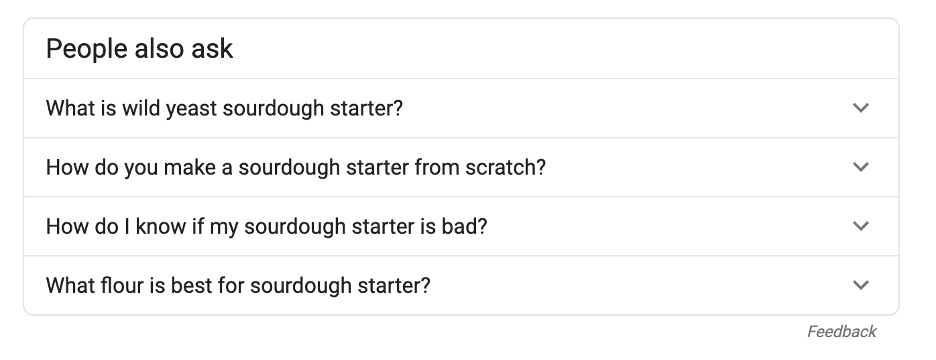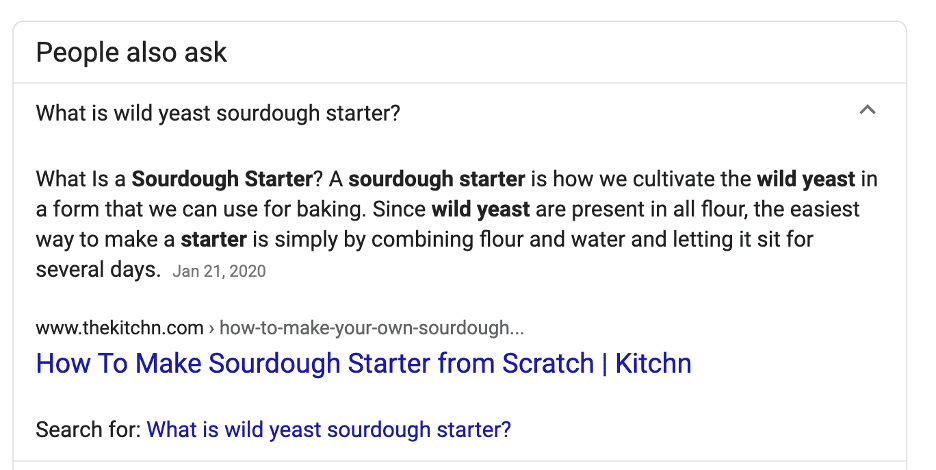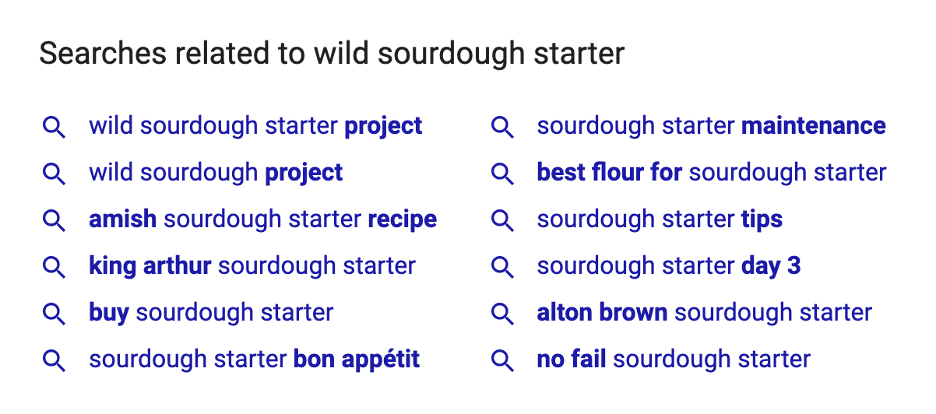
If you are serious about creating an education-based business that will thrive over time, you need to be serious about blogging to market your business – specifically, about blogging as a form of content marketing for your business.
With the possible exception of video, there are really no marketing approaches that beat blogging for enabling you to showcase your expertise, attract search engine traffic, keep you learners and prospective learners coming back to you even when they aren’t enrolled in a course, and build an audience that will enable your business to thrive.
Of course, these days most websites have a blog, but not all blogs are created equal, and not all blogs engage in content marketing – which is our focus here. In this post, we’ll walk you in detail through how to start leveraging a blog fully as a catalyst for growing your education business.
Why are you blogging?
But wait. Before you begin writing posts because you think you have to, consider the purpose of your blog. Common purposes include:
- To keep your site fresh
- To tell visitors something about yourself/your company
- To connect on a deeper level with your visitors and keep them coming back
- To demonstrate expertise and authority related to your educational products
- To attract new leads to your sales funnel
- To expand back links and boost your site’s SEO
All of these are valid reasons for writing regular blog posts, but they become content marketing only if and when they are executed with a clear understanding of how they will ultimately lead visitors to take a conversion action on your site – from signing up for your e-mail list to actually purchasing a product. The primary purpose of content marketing is to generate sales leads by providing information that is useful to people who are considering making a purchase.
Content marketing blog posts aren’t sales pitches (usually), instead they’re a form of inbound marketing that drives visitors into your sales funnel for selling courses, workshops, summits, and other educational offerings. Prospective learners attracted by the useful information contained in one of your posts can be persuaded to join your mailing list, and from there persuaded to purchase an online course, ebook, seminar place, or other offering.
Not every blog post needs to be part of your content marketing strategy. Providing learners with updates about your business and encouraging a friendly, familiar relationship between your learners and your brand are also important ways you can use a blog to market your business as an edupreneur.
But keep in mind that, overall, your blog should support attracting the right people to you and converting those people into customers. If it’s not doing that, it’s not really supporting your marketing.
Keep in mind, too, that while a blog should focus on being useful and demonstrating your expertise, it should also reflect your unique perspective and voice. There’s way too much generic blog content out there now. Nobody needs another detailed post on [insert your topic here], but there’s a group out there that will be attracted to what’s unique about you and your perspective. Those are the people you want, and blogging is one of the best ways to help them find you.
The pros and cons of blogging for content marketing
If you already have a website set up, starting a blog for content marketing is a fast and easy way to attract learners and generate more inbound links. As an edupreneur, you are already knowledgeable about your field and know the kinds of questions that learners most frequently ask. Answering those questions in long form blog posts is a great way to start your content marketing strategy. (We usually aim for a minimum of 1000 words on Learning Revolution, and 1500+ is much more common.)
The downside to blogging to market your course business is that everybody else is also doing it. The competition is high, especially in popular fields. HubSpot found that 86 percent of companies use blogging as an inbound marketing strategy, so your challenge will be to create content that is valuable to the learner and is better than the other content already available.
If you’re just getting started with a content marketing blog, it’s better to start small. Niche down as far as you can. If you teach cooking, for example, consider a post on how to create a wild sourdough starter, or how to cook the perfect gluten-free brownie. This might seem contradictory—you want to attract the highest number of visitors, so why limit the appeal of your posts? But in high-competition fields a new blog will always be outperformed by established websites. Instead, look for the gaps in existing content and try to fill them.
You might discover a completely untapped niche, in which case, make it your own. The more authority you can build within one small area, the greater your authority becomes across your field as a whole.
And always remember: it’s better to attract 10 people to you who actually want to sign up for your course than 1000 who don’t.
How to define your audience
As you begin to plan your content strategy, keep your target learners in mind. Writing in a small niche will help narrow your focus. It’s important to be as targeted as possible because you want learners to feel like you’re addressing them directly in order for your marketing efforts to have maximum impact. Speaking to the room in general makes your message easier to ignore.
If you have already taught several courses or seminars, you probably have an idea who your target learner is. Consider their gender, age, background, education, financial constraints, and specific interests. Why do they want to learn more about your subject? Are you teaching a work skill that will enhance their career, or are you giving them an opportunity to master a hobby, or improve their quality of life? Tapping into the why of what brought the learner to your website will help you convert their initial interest into a sale.
Who is your target learner?
- Male or female
- Young or old
- College or high school educated
- Blue or white collar
- Busy professional or stay-at-home parent
And, of course, don’t just stick to demographics. Ask:
- What do they value?
- What sorts of challenges might they be facing in life and/or work?
- What sorts of dreams and aspirations might they have?
Once you’ve established the basics, niche down again, just like you did with your content. Target your sourdough starter post at a 35-year-old mom of two who is concerned about food additives and wants to help her family to eat better while still enjoying the meals they love. The more specific you can be, the more affinity your site visitors will feel with you, your brand, and your message.
Have multiple learner personas
You may discover that you attract several types of learner. Your course might appeal to established business professionals looking to learn a new skill in order to stay relevant, as well as newcomers to your industry who want to know everything they can in order to be the best candidate for the job they want. Create as many learner personas as you need in order to flesh out the types of people who are interested in your classes and can be persuaded to buy. Then write separate content marketing posts targeted at each of these profiles in turn.
There are several advantages to this strategy. First, you maintain the impression of directly addressing your learners, whoever they are. You can also use your different learner profiles to rework existing posts, expanding your site’s content more rapidly. Just remember to avoid repetition, as search engines will penalize anything they perceive as duplicate content. There’s no reason you can’t write several posts on the same subject, providing the content of each post is unique. (This is hardly the only post on Learning Revolution about blogging, for example.)
- How to make your own wild sourdough starter and bake bread the whole family will love
- Get dirty in the kitchen and wow your girlfriend with perfect bread using this wild sourdough starter
Both example headlines contain the same information, but by packaging them differently, you can spin the same content to appeal to all your learner profiles and maximize your website’s reach.
How to research keywords
When you’re creating your content marketing strategy and learner personas, keywords are your best friends. A keyword is simply a common phrase used in search engines by people looking for the type of content you’re offering.
For our sourdough starter example, keywords might include “wild sourdough” or “how to make a sourdough starter.” Search engines cross-reference these queries against the content of the sites they’ve indexed in order to find the most relevant results. Nobody wants to go to the second or third page of Google looking for the answer to a question, so relevance is the key metric you need to aim for in order to perform well on Search Engine Results Pages (SERPs). Using keywords within your posts can help.
Start your keyword search with search engines themselves. Google provides plenty of information on its SERP that you can use in your research. Type in a common search query for your field. I’ll use “wild sourdough starter” as an example.
The first place to look is at the “People also ask” section. This gives you other common queries—keywords—related to your subject.

These questions are great places to start brainstorming post ideas, although you shouldn’t simply create a post exactly mirroring this question. That’s because when you expand the question, you’ll see the answer already taken directly from a source website.

These answers are known as Featured Snippets, and getting Google to link to your website in this way was a great way of boosting your organic search engine traffic. While you can replace an existing featured snippet with your own if you gain enough domain authority and Google determines your post is more relevant than the existing Snippet, this is an ambitious aim for a new website, and may even be detrimental to your site’s SEO following Google’s January 2020 update.
Originally, Featured Snippets reproduced the most relevant section of the top ranking organic results. Since January, Google has removed the site used for the featured snippet from the first page organic results entirely, in order to prevent duplicating content. This is a problem because the Snippet might provide all the information the searcher required, preventing them from clicking through to the website. In addition, many web users avoid the top level content on SERPs and skip straight to the first organic results. This can result in Featured Snippets being overlooked entirely, and removing the linked pages from the results means they never get seen.
Whether you decide to target Featured Snippets or not, they still provide valuable keyword information that can help you generate blog post ideas for your content marketing. Niche down from the Featured Snippet question in order to help generate views. For example instead of a post on “What flour is best for sourdough starter,” write your post on “Is bread flour or rye flour best for sourdough starter.”
You can also find more keyword ideas at the bottom of the SERP, in the related searches section.

Just like with Featured Snippets, you can use the related searches to give you more ideas for popular searches and generate more content for your marketing strategy. Clicking on these links will take you to new SERPs that have their own related searches and Featured Snippets, so spending an hour or two link diving through Google is a great way to take the pulse of your field and discover what people most want to know.
Short and long tail keywords
Short tail keywords are the umbrella queries that cover your field or area as a whole, while long tail keywords are more specific, niche searches. A short tail keyword might be “sourdough bread,” which covers everything from what it is, to how to make it. A long tail keyword might be “best recipe for sourdough bread starter” or “how to make gluten free sourdough bread.” As you niche down in your field, you’ll rely on more long tail keywords in order to drive content to your blog.
Focusing on long tail keywords has several advantages over targeting broad search queries. Firstly, long tail keywords are easier to rank for, and thus help you build domain authority more rapidly. There are less results for “how to make gluten free sourdough bread” (23.9 million at the time of writing), compared with “sourdough bread” alone (51.6 million). That means less competition, and a higher chance of ranking in the first SERP.
Long tail keywords also bring your target learners directly to you, reducing your bounce rate and increasing the length of time visitors spend on your site. These are both important metrics for your domain authority—how useful your site is determined to be. If you write a post that targets only short tail keywords, a significant portion of visitors will find the results irrelevant to their specific searches.
Consider, nobody goes to Google looking for all the information they can find about sourdough bread. Although they might use a short keyword, they are looking for a particular piece of information, such as “what is sourdough bread” or “how to make sourdough bread.” Anything unrelated to the information they want is irrelevant. That means if you rank highly for “sourdough bread” but don’t have a recipe on your page, the people who are looking for that particular piece of information will leave your site very quickly (“bounce”).
Instead, targeting long tail keywords ensures that the majority of visitors to your post are there because they want the precise information you’re offering. That means they’re more likely to remain on your page for longer, and to click through to other pages on your website.
The use of long tail keywords in search engines also indicates that learners are more likely to buy. You have probably heard of the “Buyer’s Journey” before. Each person goes through several stages before committing to making a purchase. These are:
- Awareness—the buyer realizes they have a problem or question
- Consideration—the buyer defines their problem and looks for a solution
- Decision—the buyer chooses a particular solution
In our example, the buyer could become aware that they have a problem, for instance that all grocery stores have sold out of bread due to shortages, or that the bread available to them at grocery stores is poor quality and full of additives. They might search for “buy bread” or “healthy bread,” and other short tail keywords.
They begin searching for a solution, such as other places to buy bread, or how to make bread at home. They settle on sourdough bread, as it is simple to make and doesn’t rely on the availability of store-bought yeast. This is where keywords begin to get longer, as the buyer searches for “how to bake bread” and “best type of bread for home baking.”
At the decision stage, they are looking for sourdough recipes and instructions on how to bake the best bread. Here they are most likely to use long tail keywords such as “best sourdough recipe for baking at home” and “how to know when my sourdough starter is ready for baking.”
By targeting your content marketing at people at the decision stage of their journey, you can more effectively convert them to buyers. Somebody who is already committed to learning to bake from home is more likely to sign up for your course on how to make homemade bread than somebody who is at the beginning of the search stage and still looking for a local grocery store that has bread in stock.
What is EAT for SEO?
In order to perform well on search engines, you need to understand how search engines work. They exist to provide users with the most relevant results to their searches. Nobody wants to spend a long time on Google or anywhere else, looking for results that might answer their queries. Instead the aim of using a search engine is to spend as little time as possible on that site.
In order to determine relevance, search engines use crawler bots to index a site’s contents and rank it based on thoroughness and site authority. This is where EAT comes in:
- Expertise
- Authoritativeness
- Trustworthiness
This is Google’s metric for determining how highly to rank a site. Is it Expert, is it Authoritative, and is it Trustworthy?
As an edupreneur, your business is based on you being an expert in your field. Your website should already make this clear, but search engines also want you to do so. Google explicitly states that creators should have “adequate expertise in the topic” in its Quality Raters’ Guidelines.
So how do you convey your expertise to search engines? Whenever you write a post, include an author bio that explicitly states your credentials. “Joe Smith has been baking at home for over thirty years, and in his spare time he has also worked as master baker for six Michelin-starred restaurants. His personal sourdough starter recently celebrated turning old enough to drink.” It doesn’t have to be serious or formal, but it does have to convey explicitly why you are the best person to be giving advice on your subject.
Ideally your site also contains an About Me page, or your bio links to a more extensive biography elsewhere. This helps search engines to categorize you as a high-authority figure who is more likely to provide accurate, relevant results.
Authoritativeness is the next determining factor in your site’s Google ranking. Run a quick search for your name online, maybe with a single broad keyword if you have a common name. What results come up? Who is talking about you, linking to your work, or repeating what you say? The more results you get, especially from high quality sites, the higher search engines will view your authoritativeness in your field.
Good ways to increase your authority include reaching out to other sites to write guest posts, providing industry quotes and information to reporters through services such as HARO, and distributing press releases and white papers that others can share online.
Finally, your site has to be deemed trustworthy by search engines. Trust is measured across the internet in a number of ways, from inbound links to customer reviews. Firstly, try to generate backlinks from relevant, high quality websites. If search engines trust the site linking to you, they’ll trust your site as well. Then reach out to past learners to leave reviews for your books, courses, and seminars. Ask for testimonials and if possible, install a widget on your website to display your reviews.
If your field is classified as “Your Money or Your Life” (YMYL), expect closer scrutiny from Google before you are ranked highly. Anything related to medical, health, and wellness fields has to meet strict quality content guidelines in order to make the front page.
- See also: EAT to Build a Consulting Brand
Other Google ranking factors
Although your content is all-important in determining your SERPs performance, there are other factors that affect how highly your site is ranked. Site security, page speed, mobile responsiveness, and user experience all play a part in how search engines rank your website.
These factors are important because search engines want to send users to the most relevant pages, but once there they want those users to have a positive experience. If every site Google recommended led to dead links and pop up ads, you’d soon start looking for another search engine. By quality checking websites, Google ensures a better user experience, helping to maintain its own reputation as a reliable search engine.
In order to ensure the best overall SERP position for your website, try to make your site as fast and clean as possible. Run your site through a free auditing tool such as GTmetrix to see how it stacks up to the competition and get advice on where to improve performance. Do away with annoying pop ups and cluttered ads, and make sure your site navigation is simple and straightforward. Try to look at your website through a stranger’s eyes and consider how a new user will find their way around. If they get lost, confused, or annoyed, they’ll leave, so try to eliminate anything that affects the end user’s experience.
Using content marketing blogs as part of your sales funnel
Maintaining a quality content marketing blog is only the first step of your overall sales funnel. The purpose of your blog is to attract new learners, engage their interest, and convince them of your authority as an edupreneur. It isn’t to close sales.

Your blog posts can only do so much work. After capturing a learner’s interest via a search engine or social media post, aim for your blog post to draw them further into your funnel, rather than trying to close a sale outright. Encouraging interested learners to join your mailing list is a small, simple step from reading a post they find interesting. You can then use your mailing list in conjunction with content marketing to promote your services and convert website visitors into sales leads.
For faster results, targeting long tail keywords will bring interested learners who are more willing to buy to your sales funnel. You can use general posts to attract visitors who have a general interest in your field, who after reading several posts or targeted emails can be enticed to sign up for your online course, buy your book, or join a seminar. However if you attract learners who already know their area of interest and have an active desire to learn more, it might only take one email directing them to your products to convince them to buy, especially if you’ve already laid the groundwork with your content marketing posts for them to accept you as an authority in your field.
Keep in touch through mailing lists
The primary goal of your content marketing should be to attract learners who are willing to stay in contact and engage with new material as you release it. Continuing to offer content marketing through a newsletter is a good way of getting a learner’s contact details, providing you with a valuable mailing list that will later engage with your promotional material.
The key is to provide value at every step. If you write an informative and valuable blog post targeting your learner profiles, that will attract the organic leads most likely to convert. But people read informative blog posts all the time without ever returning to that site again. By encouraging them to join your mailing list in return for similar content delivered in a more convenient way, you provide learners with a deal that’s difficult to ignore. They get more content, and you get their contact details—and a chance to position yourself as the primary source they turn to for information about your field.
Update posts and stay relevant
Very few fields are truly static. Information changes, new theories develop, and fashions can move whole industries in new directions. Rather than letting old posts get stale and obsolete, make a point of revisiting them and updating the information they contain.
Updating your old posts doesn’t have to be a time-consuming task. Keep an eye on your metrics and check how your site is performing over time. Maybe an old post that used to get a lot of visitors has tailed off to almost nothing, or your site’s metrics seem to have stagnated. When you notice a post or page stops performing, look it over and find out why. The information might be out of date, links broken, or perhaps the terminology you use has fallen out of fashion. There are any number of reasons why a post can stop performing, but you can almost always revive them with an update.
Deleting old posts and publishing the rewrite as an entirely new page is rarely a good idea. Generally, search engines reward longevity: they are more likely to have inbound links and higher visitor metrics, which give the page authority. A new post, with a new URL, has to start from scratch. Instead, rewrite and update your existing posts, and be transparent about the update. Although search engines like older posts, visitors tend to want the latest information. By updating material on your site, you get both advantages.
(Note: Refreshing and deleting old post is definitely a form of marketing you can outsource.)
Conclusion
Content marketing through your blog is a great way of attracting new learners and boosting your website’s domain authority without relying on paid advertising to bring new eyes to your content. Done correctly, it can vastly increase your site’s organic reach and generate visitors for years to come.
Use your blog as the first stage of your sales funnel by tapping into the buyer’s journey and providing high quality, useful information that will raise your reputation in your field and convince prospective learners that you are the best teacher they could have.
You won’t get there over night, but consistently executing the activities laid out in the post will ensure that, over time, your blog becomes one of your education business’s most valuable assets.
See also:
- How to Build An Audience for Your Expertise-Based Business
- The Benefits of Blogging for Your Online Course Business
- Getting Serious About Your “Home Base”
- 14 Ways To Find New Blog Post Ideas For Traffic And Engagement
- 11 Best Web Hosting Services for Creators and Experts
**
Title image source: https://pixabay.com/photos/wordpress-blogging-writing-typing-923188/
Sales funnel image source: https://pixabay.com/illustrations/sales-funnel-marketing-plan-funnel-4318480/
Table of Contents



